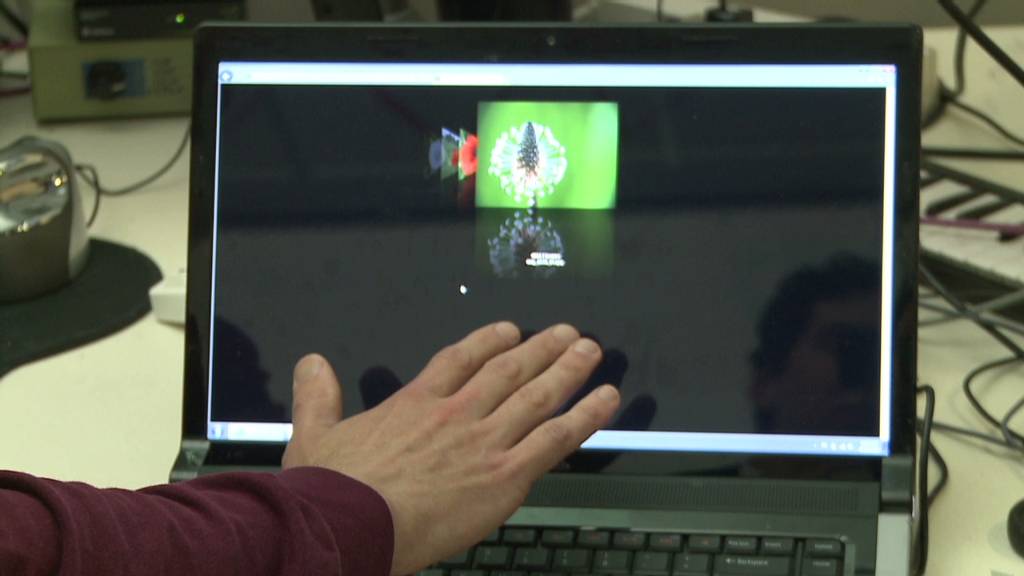
This is part 7 of CNNMoney's series looking inside Microsoft's research lab.
Touchscreens are transforming how we interact with PCs, but for those still forced to use a keyboard and mouse, there's hope.
Using only the basic hardware that exists in pretty much every laptop in use today, Microsoft (MSFT) researchers have developed software that allows a user to control their PC with a wave of the hand.
The software, called SoundWave, emits an inaudible sound from your laptop's speakers. At 20kHz, it's high-pitched enough that most people can't hear it -- but your laptop's microphone can.
When you move your hand toward and away from the laptop, the sound bounces off your hand and changes pitch. That's the Doppler Effect in action: It's like when a police siren appears to change pitch as it races past you on the street.
SoundWave is designed to detect the changing pitches bouncing off your hand. The effect is almost as if a Kinect were sitting on top of the screen. Waving your hand to and from the laptop can make the computer scroll a page up and down, cycle through photos, or flip through a list.
A Kinect costs $150, but SoundWave uses hardware that's already built in. It doesn't allow for the full range of motion that a Kinect can track, but more could be coming soon: Laptops increasingly are being shipped with two microphones, one on the left and one on the right. That means SoundWave could soon track side-to-side hand motions in addition to forward and back.
SoundWave will never replace touchscreen technology, but it could be used in tandem with it. The software could be useful in a group setting. Meeting participants could control a display screen from the audience, for instance.
Microsoft doesn't have release plans yet for SoundWave. It could eventually show up in future PCs or make its way to customers as a standalone product.

